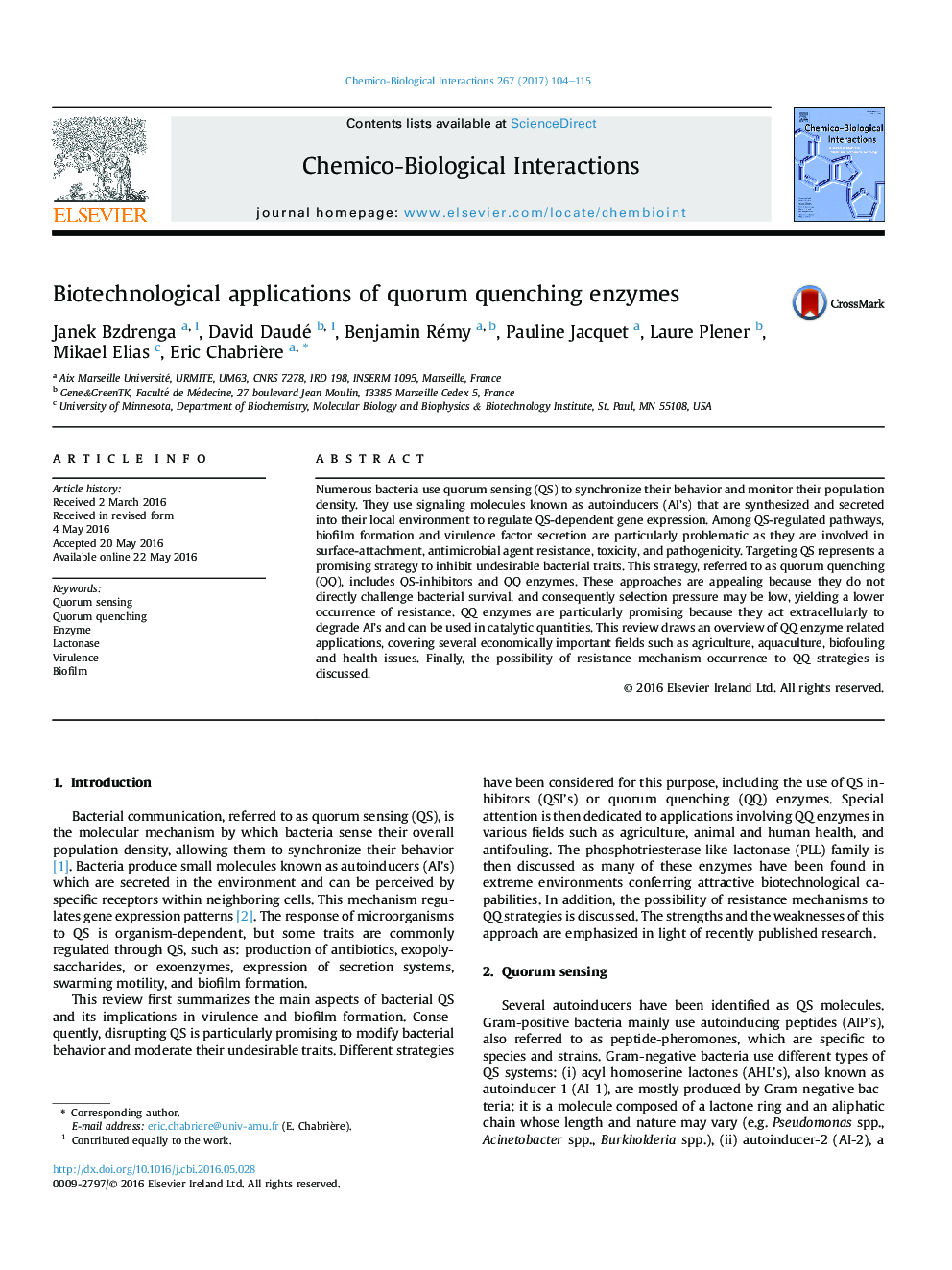| Article ID | Journal | Published Year | Pages | File Type |
|---|---|---|---|---|
| 5559375 | Chemico-Biological Interactions | 2017 | 12 Pages |
â¢Quorum sensing (QS) is used by numerous bacteria to synchronize their behavior and monitor their population density.â¢Biofilm formation and virulence factor secretion are regulated by QS.â¢Quorum quenching (QQ) is a relevant approach to inhibit bacterial virulence.â¢QQ approaches do not kill bacteria, possibly limiting the emergence of resistance.â¢QQ enzymes, such as lactonases, are promising as they act extracellularly in a catalytic way.
Numerous bacteria use quorum sensing (QS) to synchronize their behavior and monitor their population density. They use signaling molecules known as autoinducers (AI's) that are synthesized and secreted into their local environment to regulate QS-dependent gene expression. Among QS-regulated pathways, biofilm formation and virulence factor secretion are particularly problematic as they are involved in surface-attachment, antimicrobial agent resistance, toxicity, and pathogenicity. Targeting QS represents a promising strategy to inhibit undesirable bacterial traits. This strategy, referred to as quorum quenching (QQ), includes QS-inhibitors and QQ enzymes. These approaches are appealing because they do not directly challenge bacterial survival, and consequently selection pressure may be low, yielding a lower occurrence of resistance. QQ enzymes are particularly promising because they act extracellularly to degrade AI's and can be used in catalytic quantities. This review draws an overview of QQ enzyme related applications, covering several economically important fields such as agriculture, aquaculture, biofouling and health issues. Finally, the possibility of resistance mechanism occurrence to QQ strategies is discussed.
Graphical abstractDownload high-res image (175KB)Download full-size image
